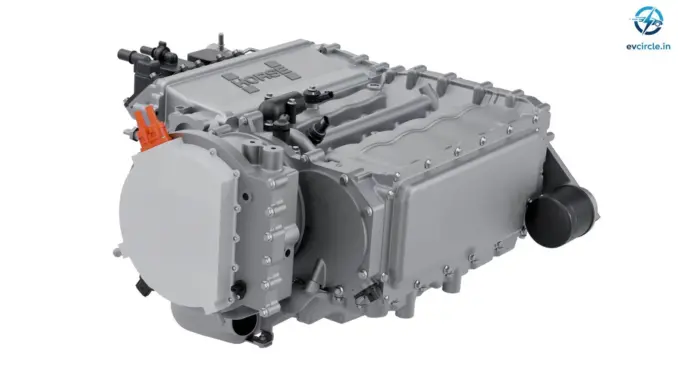
Horse Powertrain has unveiled the C15, a 1.5-liter four-cylinder engine intended to convert electric vehicles into range-extended hybrids. The company calls it “briefcase-sized,” with dimensions around 19 x 21 x 11 inches, compact enough to fit into various EV architectures without major reengineering. It’s not a traction unit but a generator set. That means it doesn’t attach to the wheels. Instead, it operates at a steady rpm to drive an integrated generator that sustains battery charge.
The C15 delivers 94 horsepower in its naturally aspirated form, aimed at smaller vehicles, comparable to the European B- and C-segments. A turbocharged model raises output to 161 horsepower, targeting larger D-segment cars and light commercial vehicles. Both variants meet Euro 7 standards, and they can run on gasoline, ethanol, methanol, flex fuels, or synthetic fuels. The layout makes it suitable for front or rear installation, mounted horizontally or vertically, depending on how manufacturers choose to package their vehicles.
Horse Powertrain frames the C15 as a pragmatic remedy for EV range worries. By integrating a liquid-fuel generator, manufacturers can downsize battery packs without sacrificing real-world range, cutting vehicle cost—which may be the biggest obstacle for EV adoption—and weight. The unit is small enough to occupy spaces like a frunk, making it appealing to OEMs that want to expand hybrid selections with minimal redesign.
Beyond the C15: a broader hybrid strategy
At IAA Mobility 2025, Horse also showcased its Future Hybrid System, a complete powertrain module that substitutes for a BEV’s front electric drive unit. The assembly pairs a 1.5-liter engine, a transmission, one or two motors, and power electronics into a single package.
Two variants are in development. The Ultra-Compact configuration measures 26 inches wide, placing a motor between the engine and transmission. The Performance configuration grows to 29 inches, adding a second motor at the transmission output shaft for greater power, with a combined output of up to 349 horsepower and 380 lb-ft of torque. Both layouts are engineered to save space versus traditional hybrid arrangements, trimming front overhang by as much as 150 mm and freeing space for HVAC systems or other front-end components.
OEMs can now more easily build hybrid vehicles and range-extended electric vehicles on their current electric platforms. By pairing the front module with a rear-mounted motor, manufacturers can create AWD—which differs from 4WD—systems without extensive rework. The fuel system supports gasoline, E85 ethanol, methanol, and synthetic fuels, enabling use across diverse market environments. Horse anticipates the Future Hybrid System to reach production in 2027. Like the C15, it’s marketed as a drop-in solution that allows automakers to broaden portfolios quickly while addressing cost pressures.
Efficiency gains with new materials and tech
Horse Powertrain is also developing core component advances to boost efficiency across its hybrid range. One highlight is an amorphous iron stator for electric motors. Whereas conventional stators use stacked steel laminations about 0.20 mm thick, Horse has reduced this to 0.02 mm by using amorphous steel with a non-crystalline atomic structure. The outcome is a 50% reduction in iron losses, lower heat generation, and a reported efficiency of 98.2%. Horse says this establishes a new benchmark for automotive motors, with peak output reaching 188 horsepower and 266 lb-ft of torque.
Another advancement is a GaN-based generator module. By using gallium nitride semiconductors instead of silicon, Horse succeeded in reducing the generator size by 20% while improving thermal performance. The generator delivers 67 hp at 4,500 rpm with 95% efficiency, operating in extreme temperatures from -40 to 230 degrees Fahrenheit. GaN really is all the rage these days, even appearing in laptop and phone chargers.
Taken together, these developments reinforce Horse Powertrain’s position that the shift to electrification won’t rely on a single technology. Compact range extenders like the C15, integrated hybrid modules, and more efficient motors give automakers multiple routes to balance range and emissions objectives. By offering modular, drop-in solutions, Horse aims to lower complexity for OEMs while adapting to evolving policies and consumer expectations.
See also: Dacia Hipster EV Concept Redefines Urban Mobility
Tech enthusiast and researcher passionate about innovations shaping the future of mobility.
Leave a Reply